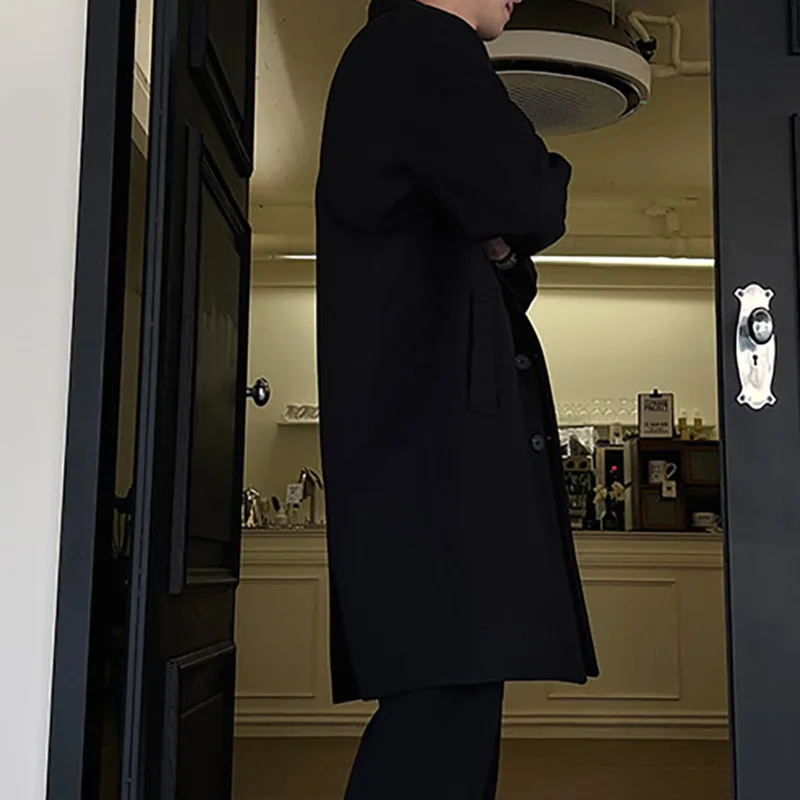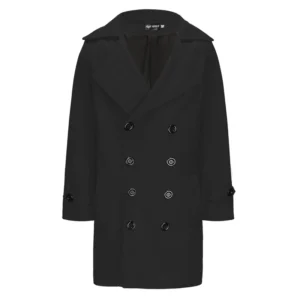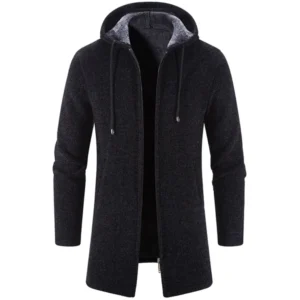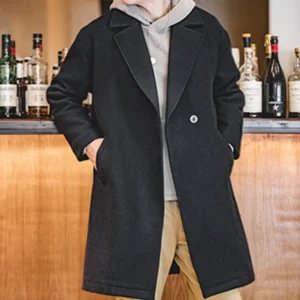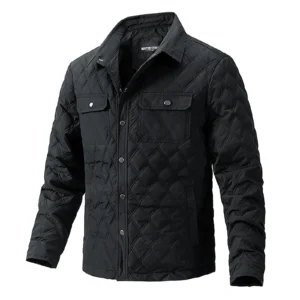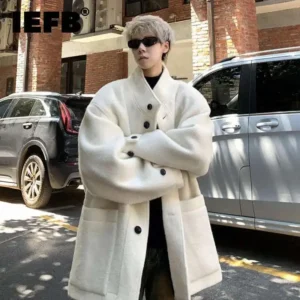Introduction: The Iconic Maritime Garment with a Curious Name
The peacoat stands as one of the most recognizable and enduring outerwear designs in men’s fashion: a short, double-breasted wool coat with broad lapels, a convertible collar, and vertical pockets. This classic maritime garment has maintained its distinctive silhouette for centuries, transitioning from purely functional naval wear to a timeless fashion staple. But while most people can instantly recognize a peacoat, fewer know the actual origins of its curious name.
Where exactly did the term “peacoat” come from? Despite its widespread use in modern fashion vocabulary, the etymology of this iconic coat remains somewhat mysterious to many. The answer lies not in peacock feathers or garden vegetables, but in the rich maritime history of European naval forces, where this practical garment first earned both its form and name. The peacoat’s journey from naval necessity to fashion staple carries with it a fascinating linguistic evolution that connects us directly to seafaring traditions of centuries past.
Today’s men’s pea coats maintain many of the same features that made them essential equipment for sailors facing harsh weather conditions on the open seas. As we explore the true origins of the peacoat’s name, we’ll discover how this utilitarian garment earned its distinctive title and why both its design and terminology have stood the test of time.
The Dutch Naval Origins: From “Pijjekker” to Peacoat
The most widely accepted etymology of “peacoat” traces back to the Dutch navy of the 16th-18th centuries. During this period, the Netherlands maintained one of the world’s most powerful maritime forces, with sailors who needed protection from the harsh conditions of the North Sea. The Dutch created a practical coat that would later influence naval uniforms worldwide.
The Dutch Linguistic Connection
The original Dutch term for the garment was “pijjekker” or “pijjakker,” a compound word with significant meaning in maritime contexts:
- “Pij” (pronounced similarly to “pea”) referred to a specific type of coarse, heavy blue woolen fabric used extensively in maritime clothing
- “Jekker” or “jakker” meant a jacket or coat in Dutch
This combination created a practical term that simply described the garment’s material and function: a coat made from this specific maritime wool. As Dutch naval influence spread throughout Europe and eventually to America, so did their practical garment designs.
From Dutch to English: The Phonetic Evolution
Linguistic experts trace how the Dutch term “pijjekker” gradually transformed as it entered English maritime vocabulary:
- First to “pij-jakker” (maintaining the Dutch pronunciation)
- Then to “pea-jakker” (adapting to English phonetics)
- Eventually shortening to “pea jacket” or “pea coat”
This linguistic journey followed the practical adoption of the garment itself across different naval traditions. The Dutch maritime prominence during the Age of Sail meant their naval innovations, including terminology, spread widely through international shipping communities where English eventually became the dominant language.
When selecting the ideal coat for your wardrobe, choosing the right coat length becomes an important consideration, much as Dutch sailors needed proper-length garments that wouldn’t interfere with their work while providing adequate protection. Understanding how to wear a pea coat traditionally connects modern fashion enthusiasts to these naval origins, where functionality determined every aspect of the design.
The “Pilot Cloth” Theory: An Alternative Explanation
While the Dutch origin theory represents the most widely accepted etymology, another compelling explanation has gained significant traction, particularly within American naval circles. This alternative theory suggests the name derives not from Dutch linguistic roots but from the specific material used in manufacturing these coats.
According to this explanation, “pea” is actually an abbreviation of “pilot cloth” or “P-cloth,” a heavy, coarse blue woolen fabric specifically developed for maritime use. Pilot cloth earned its name because it was used to make jackets for ship pilots and navigators who needed exceptional protection from harsh weather while guiding vessels through difficult waters. These jackets made from pilot cloth would have been called “P-cloth jackets,” which could have naturally shortened to “P-jackets” through everyday usage.
Over time, according to this theory, the term “P-jacket” evolved phonetically into “pea jacket” and finally “peacoat.” The U.S. Navy has historically favored this explanation in some of its documentation about uniform history, which has helped maintain its credibility despite the stronger linguistic evidence supporting the Dutch origin theory.
The pilot cloth explanation remains plausible because it aligns with common patterns of language evolution through practical usage. Terms that begin as technical specifications often transform into shorthand through daily use by practitioners. When comparing different traditional outerwear options, the distinctions between a wool car coat vs. pea coat often come down to such historical and functional differences in their development.
The Peacoat’s Evolution Through Naval History
The peacoat’s journey through naval history represents a remarkable case of design continuity across centuries. Originally developed for practical maritime use, the coat’s functionality earned it a place in naval uniforms worldwide, with each navy making subtle modifications while maintaining the core design elements.
The Dutch Navy first standardized the use of these heavy wool coats in the 1800s, when sailing vessels remained the primary means of naval warfare and transportation. British and American navies soon adopted similar designs, recognizing the practical advantages of the garment. By the late 19th century, the peacoat had become standard issue for enlisted sailors in most Western navies.
The functional elements of the peacoat directly addressed the challenges of maritime service:
- The double-breasted front provided an additional layer of protection against cutting winds
- The broad collar could be turned up and secured to protect the neck and face during storms
- The heavy wool construction (traditionally 30-32 ounces) retained warmth even when damp
- The shorter length allowed freedom of movement for climbing rigging and performing shipboard tasks
- Large buttons were designed to be manipulated even with cold or gloved hands
These practical features remained remarkably consistent through technological transitions from sail to steam and eventually to modern naval vessels. The coat’s utility ensured its continued use even as other uniform elements evolved with changing times.
The design’s transition to civilian fashion began in earnest after World War II, when surplus military clothing entered civilian markets. The men’s double-breasted pea coat style proved particularly adaptable to civilian fashion while maintaining its core identity—a rare example of a garment crossing from purely functional origins to fashion staple without losing its essential character or name.
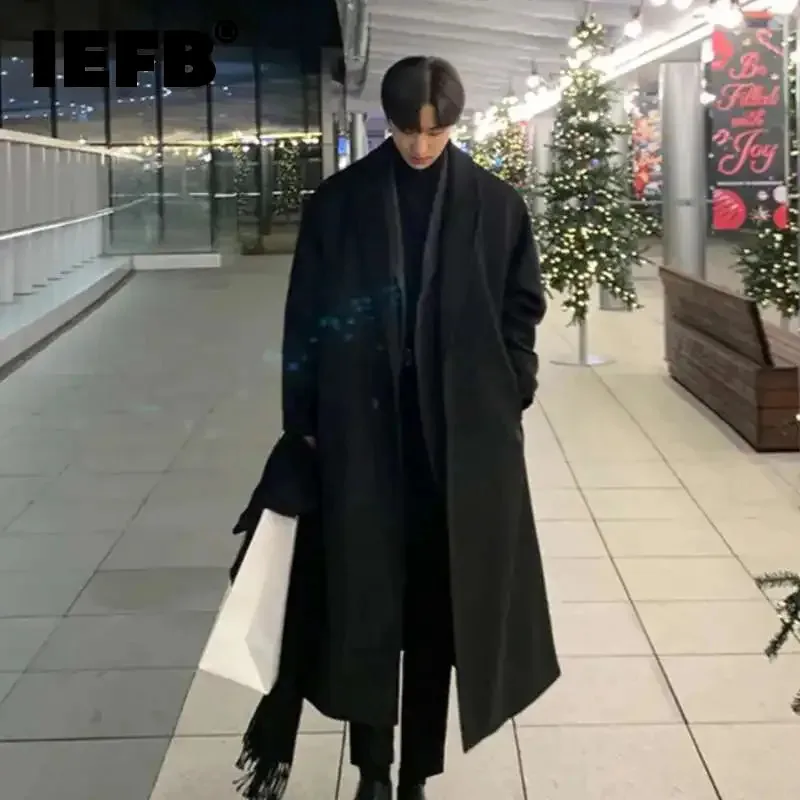
Distinguishing Features of an Authentic Peacoat
To truly understand why the peacoat earned and maintained its distinctive name, it’s essential to recognize the specific features that define this iconic garment. A genuine peacoat, reflecting its naval heritage, possesses several unmistakable characteristics:
Double-Breasted Front
The hallmark design features a double-breasted front with 6-10 buttons (typically 8), arranged in two parallel vertical rows. This wasn’t merely aesthetic—it provided twice the wind and water protection for sailors facing harsh conditions.
Convertible Collar and Broad Lapels
The wide lapels and collar were designed to be worn either open or closed. When fully buttoned, the collar could be turned up to protect the neck and lower face from wind, spray, and cold—a crucial feature for deck watches in foul weather.
Heavy Wool Construction
Traditional peacoats used melton wool weighing approximately 30-32 ounces, creating a dense, almost water-resistant shell. This heavy material would stay warm even when damp—a vital quality for maritime use. The material was typically navy blue to hide stains and provide uniformity.
Straight, Hip-Length Cut
The peacoat traditionally ends at hip length, significantly shorter than overcoats or bridge coats. This mens coat length guide feature allowed sailors full mobility for climbing and working while still providing core warmth protection.
Practical Pockets
Authentic peacoats feature either vertical or slash hand-warmer pockets positioned to allow easy access while providing shelter for cold hands. Some naval versions included an internal pocket for personal items.
Distinctive Buttons
Traditional naval peacoats featured anchor-emblazoned buttons made of wood, bone, or later, metal. These buttons were larger than typical coat buttons to allow manipulation with cold or gloved hands.
These defining characteristics distinguish peacoats from similar maritime garments like bridge coats (which are longer), reefer jackets (which are slightly different in cut), or duffle coats (which use toggles instead of buttons). The mens wool pea coat tradition maintains these distinctive features that make them immediately recognizable and functionally superior for cold-weather wear.
Common Misconceptions About the Peacoat’s Name
Despite the strong historical evidence supporting the Dutch “pijjekker” origin, several misconceptions about the peacoat’s name continue to circulate. These folk etymologies demonstrate how fashion terminology often becomes subject to creative reinterpretation over time:
Myth: Named After Pea Plants or Color
Some incorrectly believe the name relates to the green color of peas or their rounded shape. In reality, traditional peacoats were almost exclusively navy blue, with no connection to the vegetable in either appearance or function.
Myth: Abbreviation for “Petty Officer’s Coat”
A persistent but incorrect explanation suggests “pea” stands for “petty officer,” making it a “petty officer’s coat.” Historical naval records clearly show that peacoats were issued to sailors of all ranks, not just petty officers.
Myth: Named After the “P” for Protection
While protection was certainly a function of the coat, no historical evidence supports the idea that “P” was an abbreviation specifically denoting protective qualities.
Myth: Fabric Resembling Pea Soup
Some creative explanations suggest the rough texture or color of the wool resembled pea soup. This colorful but unfounded explanation ignores the well-documented linguistic evolution from Dutch to English.
Understanding these misconceptions helps appreciate why accurate historical research matters in fashion terminology. The true Dutch origin provides a much more logical and historically supported etymology than these creative but unfounded explanations.
The common question of why are pea coats expensive relates directly to their historical construction standards—the original heavy wool specifications and durable construction methods resulted in garments that were built to withstand years of harsh conditions, a tradition of quality that continues in properly made modern versions.
The Peacoat’s Journey from Naval Utility to Fashion Icon
The transformation of the peacoat from strictly naval utility garment to mainstream fashion staple represents one of the most successful military-to-civilian style crossovers in fashion history. This journey began in earnest during the post-World War II era when surplus military clothing entered civilian markets in significant quantities.
The peacoat’s civilian popularity accelerated during the 1950s and 1960s when it was adopted by various youth subcultures, particularly in Britain and America. Its association with working-class toughness and maritime tradition gave it an authentic appeal that contrasted with more formal overcoats. Hollywood further cemented the peacoat’s iconic status when stars like Robert Redford, Steve McQueen, and later Daniel Craig wore them in influential films.
What makes the peacoat’s crossover remarkable is how little the core design needed to change to become fashionable. Unlike many military garments that required significant modification for civilian acceptance, the peacoat’s silhouette remained largely unaltered. Fashion houses might adjust the fit, weight of wool, or button styling, but the defining characteristics remained intact.
Perhaps most interesting from an etymological perspective is how the name “peacoat” remained firmly attached to the garment despite its complete disconnection from original Dutch maritime terminology. Few modern wearers have any knowledge of “pijjekkers,” yet they consistently identify the garment by its evolved name—a linguistic fossil preserving maritime history in everyday fashion vocabulary.
When evaluating outerwear options, understanding the differences between short vs. long coats helps modern consumers make appropriate choices for different settings and weather conditions—considerations not unlike those faced by naval clothing designers centuries ago.
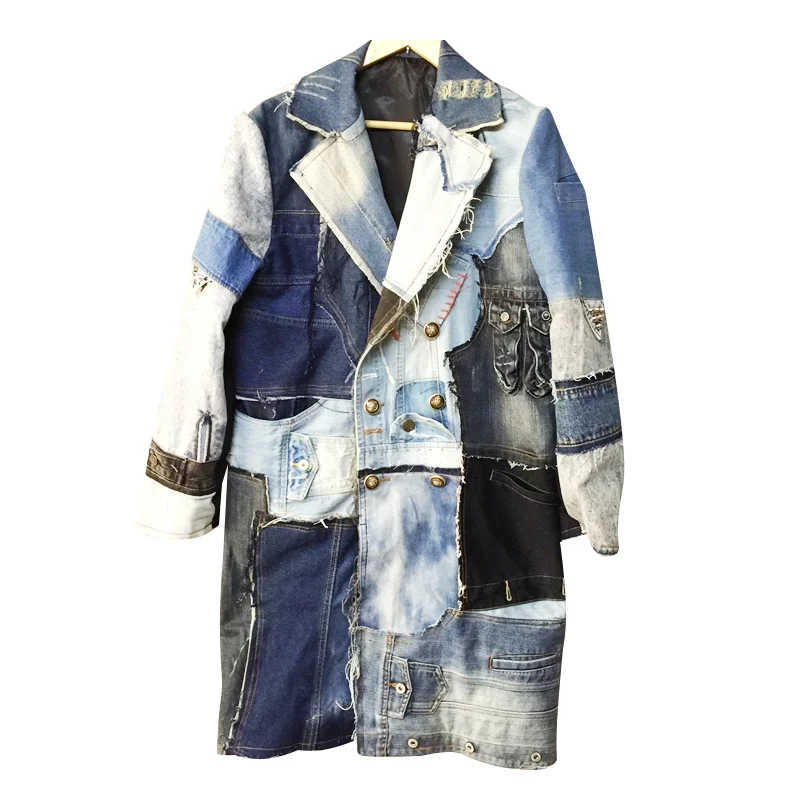
Regional Variations and International Adaptations
While the core design of the peacoat remained remarkably consistent across different naval traditions, subtle regional variations developed as different maritime powers adapted the garment to their specific needs and national styles. These variations sometimes included different terminology while maintaining the essential characteristics.
The British Royal Navy developed what they often called “reefer jackets,” which shared many characteristics with peacoats but sometimes featured subtle differences in collar design and button arrangement. American naval peacoats typically featured anchor-emblazoned buttons and a slightly more generous cut than their European counterparts.
Northern European navies, operating in particularly harsh conditions, sometimes produced heavier versions with additional insulation or wind-resistant features. Southern European adaptations occasionally used slightly lighter wool while maintaining the double-breasted design.
These regional differences extended to terminology as well. The French Navy used the term “caban” (possibly connected to the English “cabin”) for their version of the coat. Portuguese sailors referred to similar garments as “cabana” or “cabano.” Despite these linguistic variations, the fundamental design remained recognizable across naval traditions.
What unites these regional variations is their common ancestry and function—all developed to protect sailors from harsh maritime conditions while allowing necessary mobility for shipboard tasks. The universal need for practical foul-weather gear drove similar design solutions across different naval traditions, even when terminology varied.
For those exploring broader options in traditional outerwear, mens wool coats come in various styles influenced by these different regional traditions, each with their own historical lineage and functional adaptations.
Why the Traditional Design Endures in Modern Fashion
The peacoat’s remarkable longevity in fashion represents a rare case where functional design has proven equally valuable for its aesthetic qualities. Several factors explain why both the design and its distinctive name have endured:
Timeless Proportions
The peacoat’s silhouette—with its structured shoulders, slightly nipped waist, and hip-length cut—creates naturally flattering proportions for most body types. These balanced proportions have remained aesthetically pleasing despite changing fashion trends.
Versatility Across Dress Codes
Few outerwear pieces transition as seamlessly between casual and formal settings. A peacoat looks equally appropriate over jeans and a sweater or layered over business attire, making it exceptionally versatile in modern wardrobes.
Functional Features as Style Elements
Details originally designed purely for function—the convertible collar, double-breasted closure, and distinctive buttons—have become defining style elements that provide visual interest and character.
Heritage Appeal
The coat’s authentic maritime history gives it a genuine heritage appeal that many fashion items lack. Modern wearers connect with its authentic roots and practical design integrity.
Name Recognition
The distinctive name “peacoat” has become part of fashion vocabulary worldwide, creating immediate recognition that transcends language barriers. This name recognition has helped maintain the garment’s identity across generations.
Finding the perfect coat length for height remains an important consideration for modern consumers, just as proper proportions were essential for the coat’s original maritime function. The enduring appeal of the peacoat demonstrates how truly excellent design can transcend its original practical purpose to become a timeless style statement.
Mens Double Breasted Pea Coat, Mens Wool Blend Coat, Mens Wool Pea Coat
Price range: $136.84 through $157.36 Select options This product has multiple variants. The options may be chosen on the product pageMens Cashmere Overcoat, Mens Hooded Winter Coat, Mens Wool Blend Coat
Price range: $128.72 through $139.68 Select options This product has multiple variants. The options may be chosen on the product pageMens Black Overcoat, Mens Black Wool Coat, Mens Wool Overcoat
$339.18 Select options This product has multiple variants. The options may be chosen on the product pageMens Double Breasted Pea Coat, Mens Hooded Winter Coat, Mens Quilted Coat
Price range: $81.00 through $108.48 Select options This product has multiple variants. The options may be chosen on the product pageMens Grey Overcoat, Mens Wool Blend Coat, Mens Wool Overcoat
$201.28 Select options This product has multiple variants. The options may be chosen on the product pageMens Herringbone Coat, Mens Long Overcoat, Mens Wool Overcoat
Price range: $197.16 through $203.69 Select options This product has multiple variants. The options may be chosen on the product page
Frequently Asked Questions About Peacoats
How should you care for a wool peacoat?
Proper care extends the life of a quality peacoat. Brush the coat regularly with a clothing brush to remove surface dirt and debris. Spot clean minor stains promptly using a damp cloth. Dry clean only when necessary, typically at the end of the winter season before storage. When storing, use a sturdy, wide-shouldered hanger and keep in a breathable garment bag to protect from dust and moths.
What’s the difference between a peacoat and a bridge coat or reefer jacket?
While similar in design, these naval coats differ primarily in length and some details. A peacoat typically ends at hip length, while a bridge coat extends to mid-thigh or knee length—originally designed for officers who needed additional protection during long watches on the bridge. Reefer jackets are sometimes considered synonymous with peacoats but traditionally feature slightly different lapel and pocket configurations.
Are modern peacoats still made to naval specifications?
Most commercial peacoats take inspiration from naval designs but modify them for contemporary fashion and comfort. True military specification peacoats use heavier wool (32 oz. melton) than most commercial versions (typically 20-24 oz.) and feature specific button arrangements and pocket placements. Some specialty manufacturers still produce authentic naval-specification peacoats for enthusiasts seeking the original heavy-duty construction.
Why do traditional peacoats have anchor buttons?
The anchor-emblazoned buttons on naval peacoats served both practical and identification purposes. Practically, the larger, more distinctive buttons were easier to manipulate with cold or gloved hands. They also clearly identified the wearer as naval personnel. Modern fashion peacoats sometimes maintain this tradition as a heritage detail, though many use plain buttons for a more versatile appearance.
How can you identify a high-quality peacoat?
Quality peacoats feature dense, heavyweight wool (ideally 24 oz. or heavier); fully-lined interiors with inside pockets; reinforced stitching at stress points; properly aligned patterns at seams; smooth, substantial buttons securely attached; and clean, even stitching throughout. The coat should feel substantial, with lapels that lay flat and a collar that stands properly when turned up. Metro Cloak’s selection focuses on these quality indicators to ensure lasting performance.
For those exploring broader outerwear options, mens overcoats provide alternative styles for different weather conditions and formality levels.
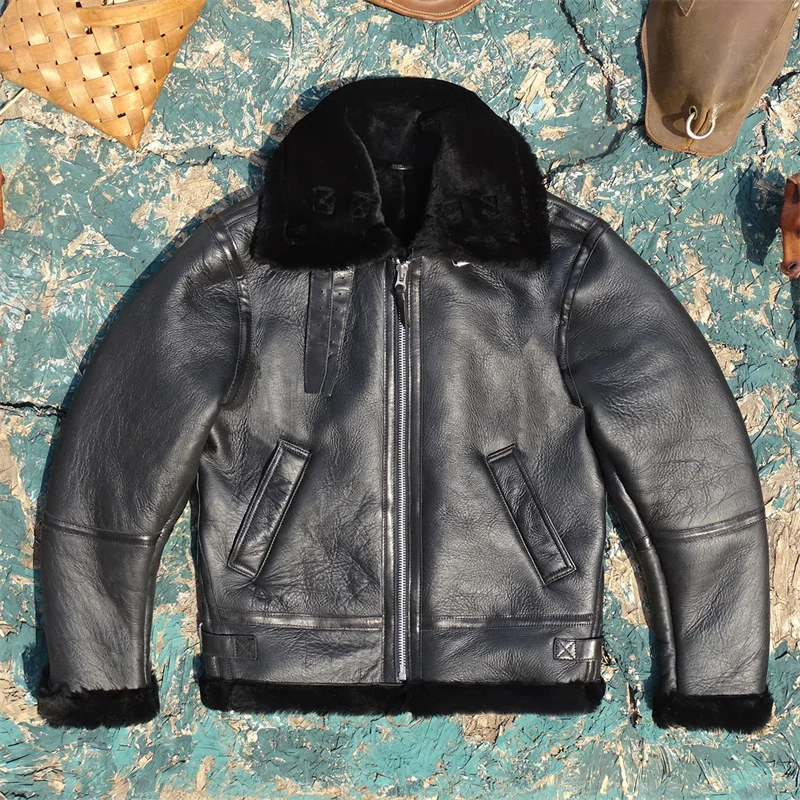
Conclusion: A Name Carried Through Maritime History
The peacoat’s name, most credibly derived from the Dutch “pijjekker,” represents a fascinating linguistic journey that parallels the garment’s physical evolution from specialized naval equipment to worldwide fashion staple. This etymology connects modern wearers directly to maritime traditions stretching back hundreds of years—a living connection to seafaring history preserved in everyday language.
Understanding that the heavy wool coat keeping you warm today shares both design elements and nomenclature with garments that protected sailors from the harsh conditions of the North Sea creates a deeper appreciation for its heritage. The peacoat stands as a rare example of functional design so perfectly conceived that it required minimal changes to transition from purely practical origins to enduring style.
The peacoat’s journey from Dutch naval origins to global fashion staple demonstrates how truly excellent design transcends time, culture, and context. Both its form and name have weathered centuries of changing fashion with remarkable integrity—a testament to the perfect marriage of function, durability, and style that few garments can match.

